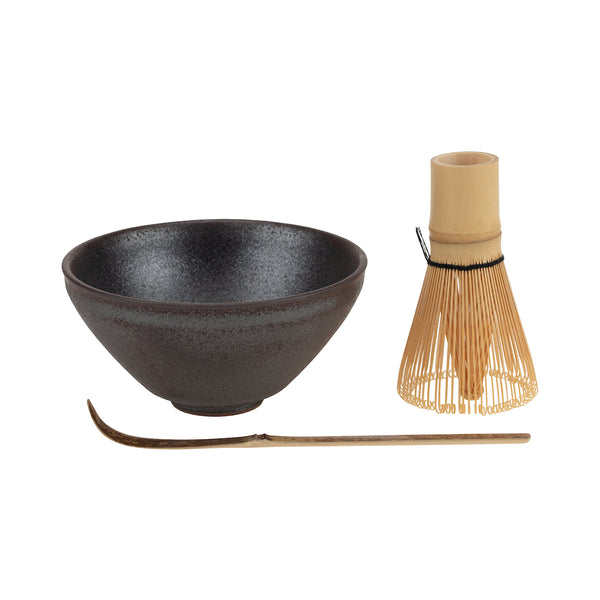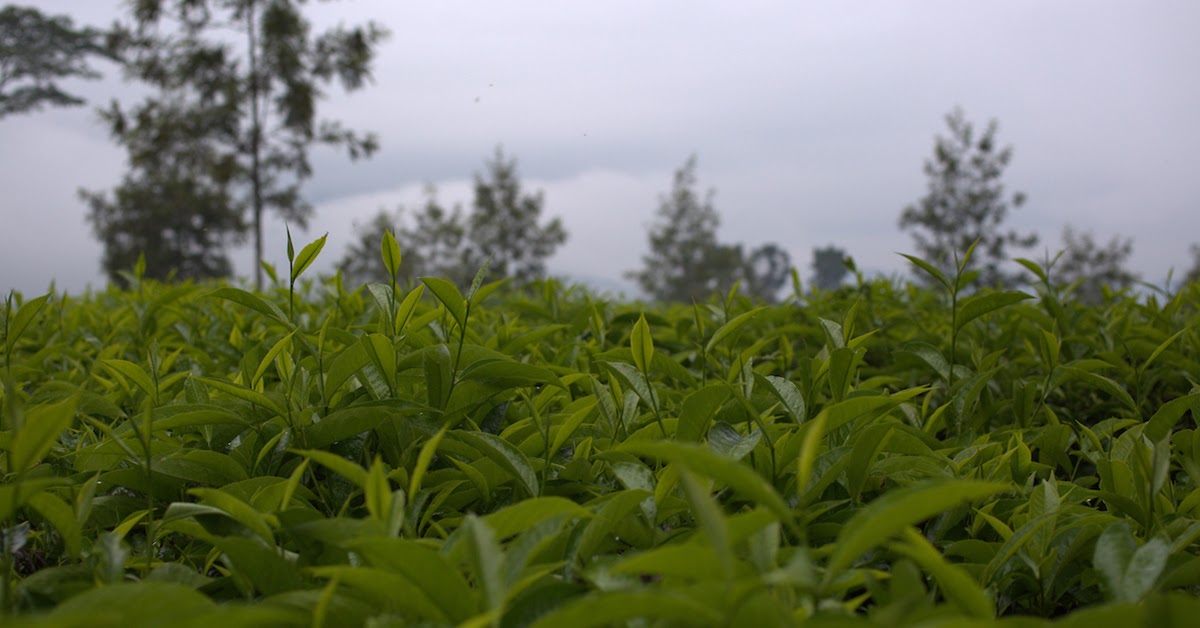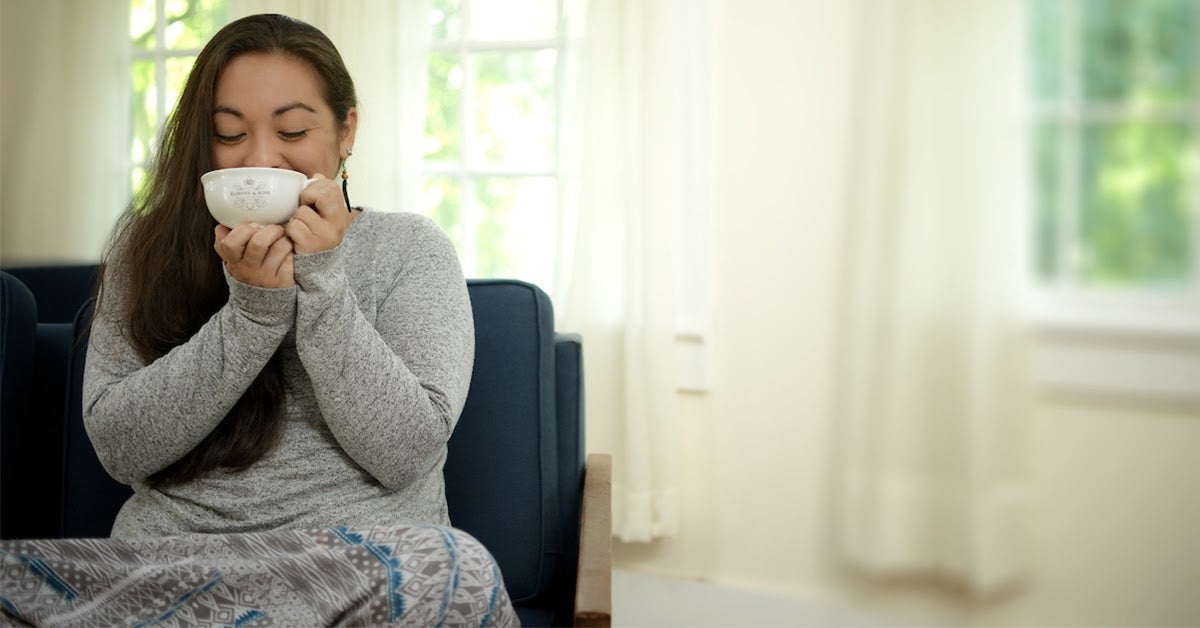Matcha. Even if you haven’t tried it yet, you’ve likely heard about it. Or seen someone delightedly sipping on a frothy green beverage in a local tea or coffee shop.
Matcha has gotten a lot of buzz in recent years, and not just from its caffeine content (which we will discuss later). If you’ve been matcha-curious, here is some information that will help you know more about this ancient tea. If you’re already a fan, you’ll likely be an even bigger one after learning more. And if you’re not yet a fan, we hope you might be persuaded to give matcha a try.
Matcha: What Is It and Where Does It Come From?
Matcha is made from a green tea called tencha. Tencha is a shade-grown tea like Gyokuro, covered over during the last three weeks before the early May harvest. Derived from the Camellia sinensis plant, tencha has clean vegetal flavors of steamed spinach and artichoke hearts and a pleasant medium body. The tencha leaf is what gives matcha its truly unique flavor.

While you can certainly drink a cup of tencha, it is rarely drunk in its pure form (although, we are one of the few who do offer tencha for your drinking pleasure). Tencha leaves are almost always ground into a powder: matcha. The word “matcha” comes from the Japanese “ma” which means “rubbed” or “ground,” and “cha” which means “tea.” Matcha is simply the powdered form of tencha.

The best tencha comes from the Uji tea fields in Kyoto prefecture of Japan, where it originated, as well as from Mie prefecture to the southeast. Tencha is now grown in other parts of Japan as well as China.

Image: The partially processed leaf being tasted at auction.
There was a time when the only tea consumed consisted of powdered tea leaves mixed with hot water. The oldest type of tea found in Japan, matcha is what Buddhist monks brought back with them to Kyoto after visiting the Jin Shan monastery in the ninth century. After monks began cultivating tea in Japan, the matcha they made was consumed mostly by monks and royalty, then trickled down only as far as the noble warrior class, the samurai. Traditionally, Japanese aristocrats used matcha for their tea ceremony. It was only in the 1800s that Japanese commoners started to drink brewed tea like Sencha and Bancha.
How Is Matcha Made?
First, the Tencha leaves are shaded over a few weeks before harvest to boost their chlorophyll, amino acids and other flavor compounds. Then the leaves are steam-fixed, cut and air-dried rather than rolled and fired. Because they are merely chopped up and air-dried, Tencha offers one of the purest expressions of mature tea leaves. Tencha has no roasted flavors, only pure vegetal notes of steamed artichokes cooked in lemon water.

Unlike Tencha, which is left whole, matcha is created by being milled into a fine powder. Today, traditional stone mills have given way to impressive high-tech operations. During the chance to visit one factory, we had to don protective clothing as if heading into surgery, then pause in an airlock where machines blow off the from the protective clothing any particulate matter that might contaminate the powder. In the production room, everything was covered with bright green dust, especially the rows upon rows of millstones whirring away. The millstones have their work cut out for them: after a full hour of grinding, they produce only two ounces of the powdered tea. All that work for two ounces of tea is one of the main reasons for matcha’s price tag.

Image: Matcha at auction.
When it comes to brewing and preparing matcha for your sipping pleasure, you’ll first need some helpful tools to do it correctly:
- A “chawan” or bowl.
- A “chasen” or whisking device. Also, a small regular whisk will do.
-
A “chashaku” or matcha scoop. An everyday teaspoon makes a perfectly acceptable substitute.

(For your matcha-preparing convenience, we offer a complete set of these tools.)
To make matcha:
- Add two heaping scoops (1-2 tsp) of matcha to your bowl
- Pour in a little cool water and mix into a paste
- Add warm (160-170 degree Fahrenheit) water
- Whisk the tea in brisk angular motions for 30 seconds, repeatedly tracing out an M in the cup to form a thick, foamy broth
- Enjoy!
Watch this helpful video to see how it’s done!
How Does Matcha Taste?
As we’ve said previously, matcha is heady and intense, offering a tea experience like no other. With a mouth-filling, even head-filling broth, the vegetal flavors of tencha are amplified exponentially. Matcha tastes intensely of spinach and artichokes, followed by a surprisingly bitter but satisfying kick. The better matchas balance the bitterness with sweet notes—especially in the aftertaste, which should linger long in the back of the mouth. Our blended matchas will give you an idea of the taste of a traditional matcha, but significantly muted.
Different Types of Matcha
Not all matchas are created equal.
- “Extra thick” grade. Our Matcha Unjonotomo is an example of this grade of matcha. From leaves grown along the Uji River and stone ground, it has the highest levels of sweetness and mouth-filling body. This is considered ceremonial-grade.
- Premium or “thick” grade. Our Matcha Senjunomukashi also hails from the Uji area, but is not quite as sweet and creamy as Unjonotomo. This is considered ceremonial-grade.
- "Thin” grade. We offer Matcha Jobetsugi as a classic example of a thin grade. It is lighter in body and while still strong and bracing, the flavors are more muted and it is lighter in body. It is called thin, because you need to add more matcha to get a good bowl of tea. This is considered ceremonial-grade.
- Culinary grades are generally a summer crop that are sourced from various areas and can be quite poor in quality and taste. Our new Everyday Organic Matcha is made from summer crops grown in Uji, a cut above the Culinary Matcha offered by others. Both are great in lattés.

What About Caffeine and Other Elements?
Being a green tea, matcha does contain caffeine and in higher levels than other green teas. Because the entire leaf is used, matcha tea can contain nearly as much caffeine as a cup of coffee (an eight-ounce cup has 70mg). However, caffeine release is believed to be slower because you are drinking the entire leaf. This slower release of caffeine reduces “caffeine jitters” that coffee or other teas can cause.
With a cup of matcha, you are drinking the whole leaf. When you drink the tea leaf, you are consuming 100% of the leaf’s nutrients. Many believe there are benefits to drinking matcha tea because you are consuming all its nutrients. Those nutrients include not only vitamins and minerals, but elements like L-theanine, an amino acid that may help with anxiety, stress and insomnia. Green teas are also known to be chock full of rich antioxidants called polyphenols. One of the polyphenols found in matcha is ECGC, which has been shown in research studies to help boost metabolism along with other possible health benefits. While matcha has the same nutrients as other high-quality green teas, it is possible that due to its concentrated nature the level of antioxidant properties could be higher than other green teas.
(For reference and those following along at home, our Japanese grower reports that our Matcha Senjunomukashi contains 3900 mg of caffeine and 1500mg of L-theanine, and our Matcha Jobetsugi contains 3600mg of caffeine and 1200mg of L-theanine. Our summer harvest matchas typically contain lower levels of each, around 2900mg of caffeine and 700mg of L-theanine. Numbers are per 100 grams of matcha powder.)
More good news on the benefits front: prepared traditionally, matcha is not high in carbs or sugar so it is keto-friendly. It is also naturally gluten-free in its natural state, as long as it did not come into contact with any gluten products during manufacturing. It is also safe to drink during pregnancy, as long as having caffeine is ok’d by your physician.

Storing and Enjoying Matcha
Like any tea, exposing matcha to elements like oxygen, sunlight, moisture and other odors will cause it to degrade in color and flavor. Our tins are the perfect storage solution for keeping your matcha fresh. Keep them in a cool, dark place like a cupboard. Do not store your tea in the fridge as that environment isn’t conducive to proper tea storage. Make sure your matcha is in an airtight container, but not plastic bags as they allow light and odors to seep in.
Even when properly stored, however, matcha can begin to degrade after a few months, so the sooner you use and enjoy it, the better.
In addition to enjoying a traditional cup of matcha, we have all kinds of ways you can incorporate magnificent matcha into your life. Check out our blog posts on St. Patrick’s Day Matcha Tea Cocktail, Matcha Ice Cream, Matcha Crispy Rice Treats, and our entire Matcha Collection, including our matcha blends. Here’s to putting more green (and more spring) in your step!
Whether you’re new to matcha or have been enjoying it for years, share your thoughts on this special beverage in the comments below.





1 comment
Marco Esquandolas
Matcha in the morning is a match-a made in heaven! It makes me run like an antelope, but always in control. Thanks, Harney & Sons for this wonderful histor-tea lesson!
Matcha in the morning is a match-a made in heaven! It makes me run like an antelope, but always in control. Thanks, Harney & Sons for this wonderful histor-tea lesson!